Some are the first, some have printing errors, and some are just rare and old – all of which make them the most sought after US stamps.
Table of Contents
The 10 Most Valuable U.S. Stamps
What attracts people to stamps? Why are we excited to see Wonder Woman, astronauts, presidents, and American culture on these little scraps of paper to affix? One possibility is that they are so many things at once: they are art, they are history, they are antiques, they are money, they are miniatures – all wrapped up in the romanticism of the letters they set in motion.
The most devoted to collecting stamps – the philatelists – are preparing for a gigantic moment. In October, the collection of titles of American King William H. Gross will be auctioned at the Robert A. Siegel auction galleries in New York. As Cheryl Ganz, curator emeritus of the Smithsonian National Postal Museum in Washington, noted, Gross’s collection of American stamps is unprecedented in the history of private stamp collecting. As stamp collecting braces for a big reveal, we take a look back at 10 of the rarest stamps in American history.
1. The Inverted Jenny
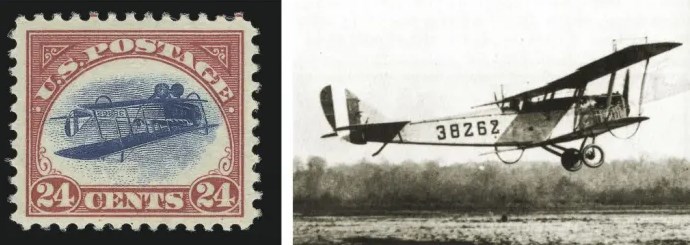
Arguably the rarest seal error in US history, Inverted Jenny is one of the most legendary. The aircraft depicted on the seal is the JN-4HM, built by the Curtiss company in the middle of the First World War (95% of American pilots trained in JN-4 during the First World War). Philately, like many other hobbies, loves self-reference: it was the first plane used to deliver mail. A printing error caused the blue vignette – the plane and the air around it – to be printed upside down, while the red border framing the scene was printed correctly.
The error only appears on a single sheet of 100 stamps, which has since been broken, so there are mostly unique examples of the stamp, although there are two blocks of four left. In 2016, a single reverse Jenny was auctioned for $ 1,351,250.
The Jennies – military biplanes – were modified for the government’s air mail service with additional fuel tanks, a different engine, and a mail funnel. They often fell. In fact, the first US Post airmail flight on May 15, 1918 ended in disaster.
The pilot flew in the wrong direction and crashed into a farmer’s field, ironically near a property owned by Otto Praeger, the postal officer in charge of the airmail. “None of the correspondence from the first day did,” says Scott Trepel, president of Siegel Auction House. “They must have sent it the next day.”
2. 1847 Issue Block of 16 of Ben Franklin
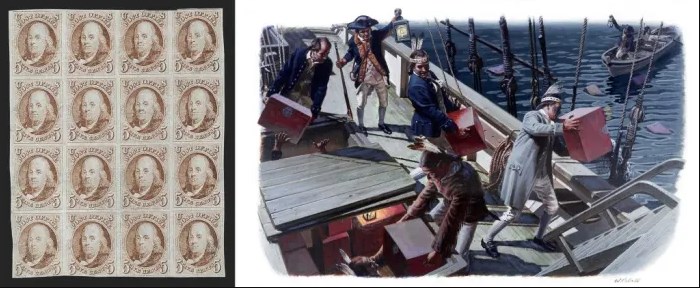
1847 is a very important year for stamps: it was the first year that you could buy stamps from the United States government and mail them as a form of prepayment for their delivery (the law was passed in 1845). These are examples of early US federal stamps. Naturally, a large amount of correspondence was exchanged before 1847 – the United States Post Office was established in 1792 – but these letters were paid for primarily by the addressee.
Benjamin Franklin, who along with George Washington graced the first stamps, has a fascinating history with the post office, full of intrigue. In 1775, after his return from England, Franklin was appointed Postmaster General of the independent colonies by the Continental Congress.
But long before, the Crown had appointed him postmaster of the American colonies in 1753, a post he shared with William Hunter. Franklin was fired from this job when, in 1774, it was discovered that he was opening correspondence (between English authorities) and forwarding the contents of the correspondence to his rebel friends – in what became known as the Hutchinson case.
3. Almanac Stamp of 1765 or 1766
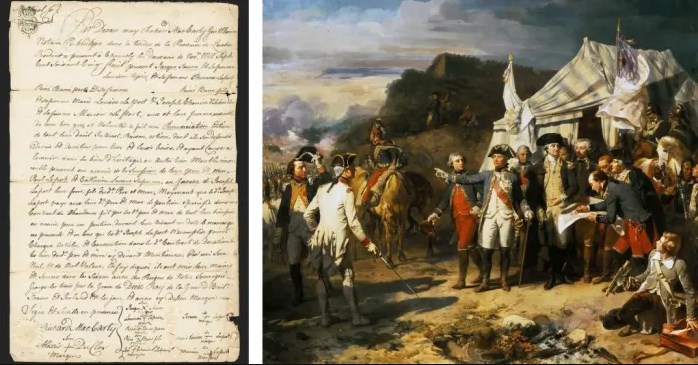
The Stamp Act, passed by the British Parliament in 1765, often cited as one of the immediate causes of the American Revolution, was in fact a tax. It was imputed on American paper used for legal, official or daily documents: ship papers, trade licenses, calendars, declarations, inventory, etc. – even play cards. The “seal” was affixed to the paper to indicate that the tax had been paid. Although the money required by the law was very low and the law was repealed the following year, the damage was done.
The colonies were furious that they could be taxed by anyone outside of their elected assemblies. Crowd violence and intimidation followed, forcing stamp collectors to step down and remove ships with stamp papers from seaports. Colonial speakers, like Patrick Henry, as well as newspapers, clung to the question of English tyranny by taking the form of unrepresented taxation, building the wave of revolution a decade later.
4. ‘Blue Boy’ Alexandria Postmaster’s Provisional

In the world of American stamp collecting, the Blue Boy is similar to the Mona Lisa. Between 1845, when Congress established federal standard rates for postage, and 1847, when the first federal postage stamps were produced, postmasters in counties and towns in all 29 states issued their own stamps. provisional. The postmasters were creative with the designs. For example, the St. Louis temporary stamps display the image of two bears holding the coat of arms of the United States between them.
Of particular interest are these provisional stamps from Alexandria, which were brought back to the state of Virginia (from the District of Columbia) during these years. Seven of these seals are known to exist, but most are “light yellow” or brownish yellow. Only one of them is bright blue – found in a love letter sent in 1847, which should have been burned by its recipient – earning the name “Blue Boy”, after the famous portrait – of a boy in elegant blue clothes – by Pintor English Thomas Gainsborough.
5. 1869 Pictorials—Inverted Center Errors
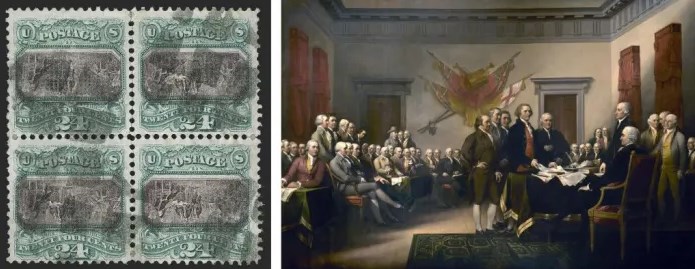
Stamp collectors love rarities, news, and mistakes – and these stamps have all three, plus a little politics. Although the stamps were printed under President Ulysses S. Grant, their issue was conceived in 1868, during the difficult days after Andrew Johnson’s impeachment, but it retained power.
Very controversial and abandoned after a year, these are the first American stamps printed in two colors. They also denoted scenes, such as Colombo’s arrival in America (previously the stamps only had portraits). The pictures are also the first example of a postal misprint. To print in more than one color, each color had to be printed separately; reckless placement of several sheets upside down in the press resulted in the first American reversal errors.
When a block of four 1869 Pictorials stamps (24 cents inverted with John Turnbull’s painting, Declaration of Independence) was sold at auction in London in 1938, it drew worldwide attention. It was the first time that a transatlantic telephone line had been used to purchase a lot at auction.
6. Two-Cent Blue Hawaiian Missionary
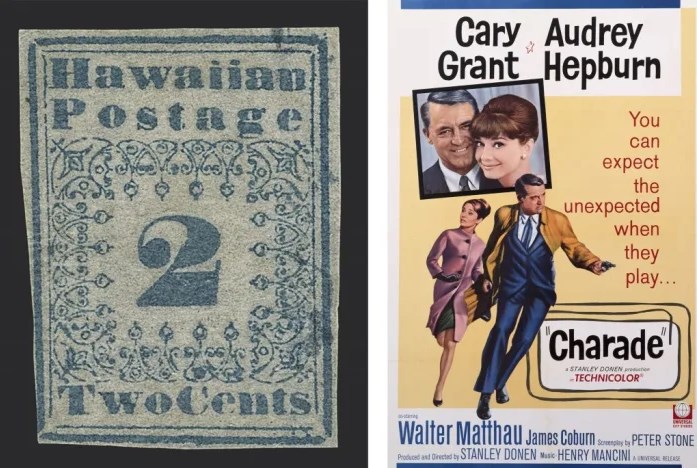
In 1963, Life magazine declared this label “pound for pound, the most precious substance on earth.” The seal dates from 1851, when Hawaii was a sovereign nation and a popular destination for American missionaries preaching the gospel. However, the Kingdom of Hawaii post office was American, and the Honolulu and San Francisco post offices were well connected. Collectors love these stamps for the rarity of their survival, as well as for their fantastic numbers.
Interestingly, the 2-cent stamp didn’t do much for one purpose – the only use was for a journal or the captain’s fees (captains of ships were given 2 cents for every letter they carried). Audrey Hepburn fans will recognize a similar stamp to her 1963 photo with Cary Grant, Charade, but there’s a catch. In this film, in which a Hawaiian missionary seal plays a key role in the plot, its value is 3 cents, but there was no missionary for 3 cents, only 2 cents, 5 cents, and 13 cents.
7. 1860 Stolen Pony Cover

This stamp offers a sample of the American myth of “Cowboys and Indians”. Founded in 1860, Pony Express was a private courier service using a network of young pilots and stations where mail could travel across the country in about 10 days (the alternative was due diligence or shipping).
Its parent company, Central Overland California and Pike’s Peak Express Company, is stamped on this cover. An Express passenger, traveling east through Nevada in 1860, is missing. Two covers from his mailbag, recovered two years later, survive today and bear the handwritten words: “Recovered from mail stolen by Indians in 1860”.
Despite all of the Pony Express legends (Buffalo Bill Cody and Wild Bill Hickok claimed to be pilots; there is also no evidence), the outfit only lasted 19 months and was actually some kind of publicity stunt. of three entrepreneurs who were trying to win a government. courier contract.
8. Pan American Inverts
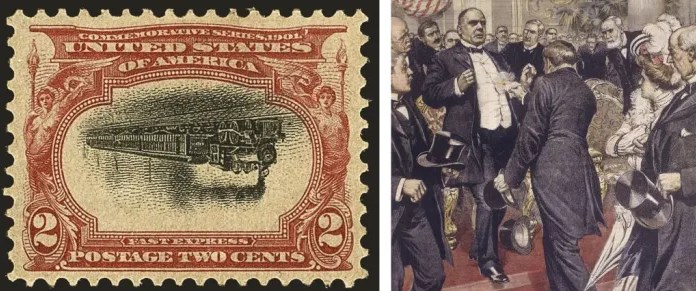
Transportation was the main theme of the six commemorative stamps – featuring the Niagara Falls Bridge and a steam engine, among others – issued in 1901 to commemorate the Pan American Exposition held in Buffalo, New York. As these stamps were printed in two colors, the occasion was ripe for error and the illustrations on the sheets of the 1, 2 and 4 cent denominations were reversed.
The Pan American Expo is less known for its stamps or Jumbo – the 9-ton elephant, hero of the British wars in Afghanistan (which turned on its owner and was subsequently executed by him) – than for the murder of the president William McKinley September 6. McKinley was shot twice at close range by anarchist Leon Czolgosz while waving to admirers of the fair. He died of his injuries eight days later (his vice president, Teddy Roosevelt, was so confident of the president’s recovery that he went to camp in the Adirondacks).
9. CIA Invert
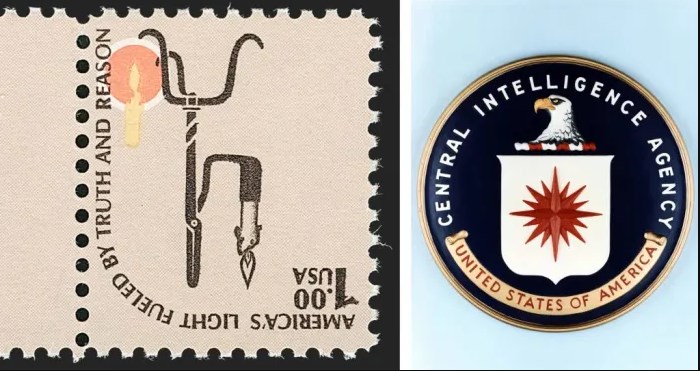
They’re complicated, these CIA agents. Between 1975 and 1981, the Post issued a series of Americana stamps, four of which depicted light sources. Among these, a $ 1 stamp – depicting a colonial lamp and a candlestick – was printed upside down on a single sheet of 100 stamps.
In 1986, nine CIA agents, who realized the mistake, purchased the sheet with the remaining 95 stamps from the post office in Mclean, Va. (The post office unknowingly sold the other five for use. as daily postage). Agents replaced the rare stamps with regular $ 1 editions, then sold a sheet with 85 of the inverted lamp stamps (plus one damaged stamp) to a collector for $ 25,000.
Each of the agents kept a seal for themselves. A scandal soon followed and the agency demanded that agents return the stamps or the termination in person (after all, they had been bought with taxpayer money). Four officers returned their stamps, four quit or were made redundant, and one officer claimed to have lost theirs and kept their job.
10. Stock Exchange Invert

This stamp is recognized not only because it is an inverted one, but because it is the last inverted that the U.S. Post Office printed in 1992 – on a stamp commemorating the 200th anniversary of the New York Stock Exchange ( NYSE).
Only 56 of these stamps exist. Surrounded by a green border with red numbers, the inverted images include a scene of modern traders, depicted standing under a central monitor at the stock exchange, and an exterior view of the neoclassical facade of the Wall Street Exchange 11.
The NYSE was unofficially created on May 17, 1792, when 24 brokers signed the Buttonwood Agreement, which established that brokers could only trade with each other and were to receive a commission of 0.25%. It was signed at 68 Wall Street, under a button tree. The deal was made after William Duer’s overzealous loans (and defaults) caused a financial panic earlier that year.
FAQs
Much of our country’s cultural history is reflected in the stamps that are created. Countless faces of celebrities, presidents, and even fictional cartoon characters have adorned some of the most important (and printed) buildings in history. However, have you ever wondered who was the first actress to appear on a US postage stamp? Or the first African American? Below, we’ll answer some frequently asked questions about the most popular labels that have ever existed in America.
Who Was the First Hollywood Actress to Appear on a U.S. Postage Stamp?
Grace Kelly became the first Hollywood actress to appear on a US postage stamp. After winning an Oscar for Best Actress for her film The Country Girl, Grace Kelly retired from Hollywood. In 1956, she became Princess Grace after marrying Prince Rainier of Monaco. Upon becoming a member of royalty, Grace Kelly once again presented herself to the world as a charity-minded and less fortunate woman. In 1982, Princess Grace died in a fatal car crash.
In 1993, the United States and Monaco issued a commemorative postage stamp in memory of Grace Kelly. Because there is a law in the United States that prevents labels from displaying foreign officials, the United States has named her “Grace Kelly”. On the Monegasque label, her name is “Princess Grace”.
What Cartoon Character Was the First to Appear on a Stamp?
In 1997, when stamps cost only 32 cents, Bugs Bunny became the first cartoon character to adorn the cover of an American stamp. Interestingly, the Bugs Bunny label is still in high demand and currently ranks seventh on the list of the ten most popular labels (in the United States).
Unsurprisingly, many people were upset to find out that Mickey Mouse wouldn’t be the first cartoon character to appear on an American label. Nevertheless, the Bugs Bunny label has attracted many customers and has sold very well.
In addition to those who discredited Bugs Bunny (as a reckless choice of stamp as they would have preferred Mickey Mouse), the concept of the Bugs Bunny stamp has also been criticized for other reasons. Before Bugs Bunny appeared on a stamp, nothing like this had been done before, and many stamp collectors felt that the use of cartoon characters on stamps dishonored the entire tradition of the individuals appearing on stamps. .
More formal stamp collectors at the time argued that the stamps are a symbol of our nation’s identity and that they have no interest in Bugs being tied to it.
Even so, the Bugs Bunny label was still out and sold very well. It remains a fashion brand for collectors to this day. Today, many of us think that Bugs Bunny is part of our national culture, and it seems fitting that it has its place in history.
Who Appeared on the Best-Selling Commemorative Postage Stamp in U.S. History?
If we omit printing errors, the answer would be Elvis. So, let’s take a closer look at this. The most popular stamp in our history was a poorly printed stamp. It first came out in 1918 as a 24 cent stamp with a biplane. The biplane was improperly printed (upside down), and only about 100 of these printing errors, known as “Jenny Invertido”, reached the public. Since then, philatelists have tried to track down these mysterious stamps. To get an idea of the value of this stamp, one of the last “Inverted Jenny” stamps we know of was sold for $ 625,000 at an auction.
So while “Inverted Jenny” is important, that is not the answer most people hear when asking this question. The best-selling commemorative stamp in US history depicted Elvis and was printed in 1993. This 29-cent stamp still stands, with over 120 million of them in circulation.
One of the reasons the Elvis stamp has become so popular has to do with a survey the United States Post Office sent out, giving people a vote on the stamp. Individuals were asked if they wanted an older, heavier Elvis or a younger, thinner one. Unsurprisingly, young Elvis voted.
On the other end of the spectrum, we have the biggest commemorative stamp disaster to watch here, too. After the release of the famous Elvis stamp, the post wanted to continue with another hit. So they made a commemorative stamp for Homer Simpson, who was at the height of his popularity at the time. The postal service predicted significant sales; however, only 318 million (out of a billion) Homeric stamps were sold.
Who Was the First African American to appear on a U.S. Postage Stamp?
The first African American to appear on an American label was Booker T. Washington, the famous professor / writer who started his life as a slave and later became a renowned speaker who discovered the Tuskegee Institute. Interestingly, in 1940 Washington appeared not only on one stamp, but on two stamps in the same year, which was a real victory for the African American community.
Considering the state of the world in 1940 and the likelihood of seeing an African American on any postage stamp around that time, you can really appreciate how essential Booker T. Washington stamps are. At the turn of the 20th century, the only individuals found on postage stamps were presidents and generals.
It should also be mentioned that only eight stamps had women in 1940 and three of those stamps depicted Martha Washington. Two others were fictional characters.
Since there were so few women, a movement began in the 1930s to put Susan B. Anthony on a postage stamp instead of another military figure. After Anthony’s supporters scored his victory, an African-American newspaper asked why no African-American had ever appeared on American labels. As a result, the movement to put Washington on a stamp had begun.
Booker T. Washington was the obvious candidate for a US postage stamp. After Washington’s nomination, President Franklin Delano Roosevelt agreed to release the label. It was decided to issue stamps with influential educators, with Washington appearing as one of those educators. Unfortunately, even with the president’s backing, the idea of the seal has been the subject of much criticism.
Another part of the problem with the Washington Seal was that it was a dime seal, which was little used at the time. If the Washington stamp was three cents it would be much more affordable. This is because the first class stamp cost three cents a stamp back then.
To some (and for good reason) it seemed like an African American’s release on a label was purposely limited by its price of dime. In addition, some critics have been upset that Washington will appear “safe” as an educator on the label, and not as a dominant public figure.
Conclusion
You can certainly see how some American postage stamps not only had a fascinating history, but also created a lot of controversy based on the cultural visions of our country at the time. Still, it’s good to see how the stamps have helped our country evolve and mature over time.
While there is always room for improvement, the stamps (and our feelings about them) have always had a huge influence on our society.


